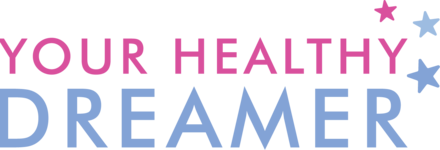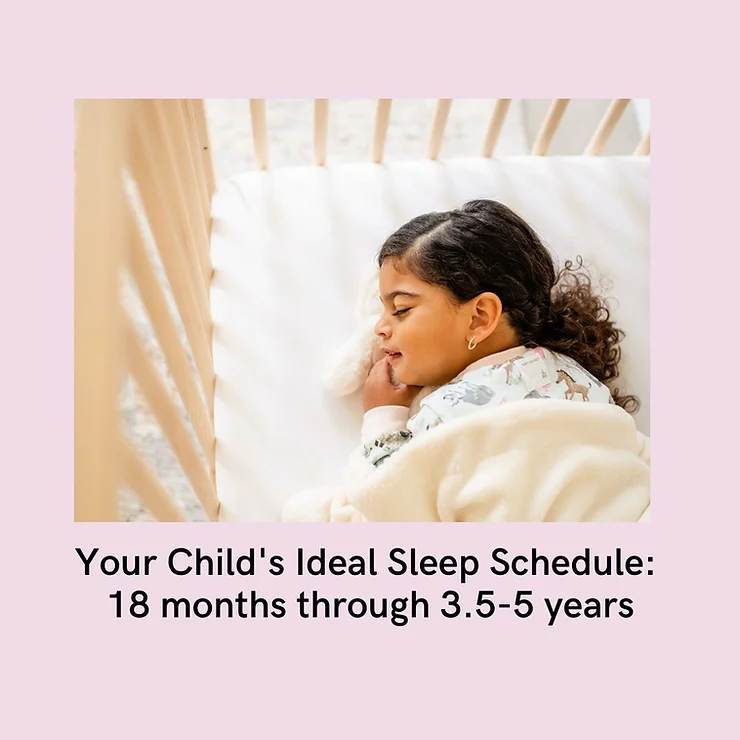Your Child’s Ideal Sleep Schedule: 18 Months Through 3.5-5 Years
The timing of when sleep is offered is one of the most important elements of healthy sleep. There are certain times of the day, based on your child’s 24 hour body clock, or circadian rhythm, that they are naturally and biologically primed for sleep. This means that at certain times of the day, based on the clock, your child is going through hormonal and temperature changes that will make it very easy for your child to fall asleep, and have deeper sleep that lasts longer and comes with more restorative benefits.
Getting timing right for your child’s sleep is a win, win win. It is truly THAT significant and worth learning more about.
Many parents are stuck relying on “wake windows” or counting hours between sleep periods to identify the timing for their child’s next sleep period. This is a SUPER helpful tool in the newborn phase, but becomes increasingly less helpful as our newborns grow into babies, toddlers and preschoolers.
In fact, an overemphasis on “wake windows” often leads to children actually missing those natural sleep periods that make sleep easier, better, and longer.
Instead, we want to be putting our children down for sleep in their most perfectly conducive and safe sleep environments right at the times when their bodies are naturally asking for sleep.
Offering our children sleep at the right times, when their bodies are naturally preparing for sleep, is the absolute best! It’s one of the most important elements in making sleep come easily for our them, and absolutely pivotal for teaching independent sleep skills to our more sensitive sleepers.
MORNING:
First, it’s important to start the day with a consistent wake time. While sleeping “in” can happen sometimes, toddlers and preschoolers are all biologically primed to be early birds. They do best when their day begins somewhere between 6 and 7am.
If your child’s day regularly starts much earlier than that, read more about Solving Early Risings here, or download my free Early Risings Guide right from My Website.
NAPS:
Children between the ages of 15-18 months and 3.5-5 years do well on a One Nap Schedule. This schedule lasts for a long time and there are big ranges and transitions on both ends.
If your toddler is new to the one nap schedule, and it has NOT been a smooth road, know that this is very normal. Read more about The Two to One Nap Transition here.
If your big kid is moving away from nap time entirely, read more about The No Nap Transition here!
Day sleep remains hugely important for our nap-needing toddlers and preschoolers, and the afternoon nap offers significant restorative value that is different from the value that comes from night sleep. For this reason, I strongly recommend prioritizing nap time and creating consistent routines around day sleep that will help your children soak up all of the rest and recovery their growing brains need to thrive.
The afternoon nap is always going to work best when aligned well with your child’s natural 24 hour body clock. Have your child’s naptime routine finished so they are ready to drift seamlessly into dreamland between 12pm and 1pm. The exact timing depends on how late they slept that morning, the quality of their night sleep, and their mood. This nap should last between 2 to 3 hours for toddlers, and may shorten to 1-2 hours for preschoolers.
The afternoon nap is hugely restorative and worth prioritizing even if it means missing activities or leaving events early. I know, I know. It’s tough turning down activities or leaving early when your child is clearly still having a blast! However, if a nap is offered after 1pm, it’s much less likely to have the same restorative value, may be missed entirely, or can impinge on a smooth bedtime.
The upside is that when your child is on a predictable nap routine with sleep being offered at the ideal times, you can be confident that they will be well rested, cooperative, curious, and pretty fun during those ever lengthening wake times. It’s more fun to plan activities when you don’t have to worry so much about overtired children and meltdowns at every turn.
BEDTIME:
Bedtime is the most important element of any sleep schedule because when timed correctly, this is when the drive to sleep is at its strongest. Remember, young children are biologically primed for an early to bed and early to rise schedule.
A bedtime that is too late is going to backfire because of the dreaded “second wind”. This is when your sweet child’s brain is noticing that their sleepy window has been missed, and it responds by producing stimulating hormones to help them stay awake! This makes it physically much more difficult for them to fall asleep at bedtime and/or sleep through the night.
A perfectly timed bedtime is going to be between 6pm and 8pm depending on the quality and length of your child’s nap, their mood, and the strength of their independent sleep skills.
In the presence of a sleep issue or during a sleep transition, shifting bedtime earlier is going to be the most important element in helping your child sleep well.
Here’s a quick glance at the ideal schedule for a child 15-18 months though 3.5-5 years:
Wake up between 6am and 7am
Afternoon nap begins between 12pm and 1pm
Bedtime begins between 6pm and 8pm
If your child is struggling with sleep, modifying the times you are offering sleep with their natural body clock is going to have a significant and very positive effect on their ability to lean into better sleep more easily.
You might also be interested in learning more about the other meaningful ways you can help to improve your child’s sleep. If so, I recommend reading about my Top 5 Tips for Healthy Sleep for babies, toddlers, and preschoolers.
If you’re interested in working one on one with me to create a comprehensive and personalized sleep plan to improve sleep for your child as quickly and kindly as possible, schedule a free 15 minute discovery call with me to learn more and get started.

